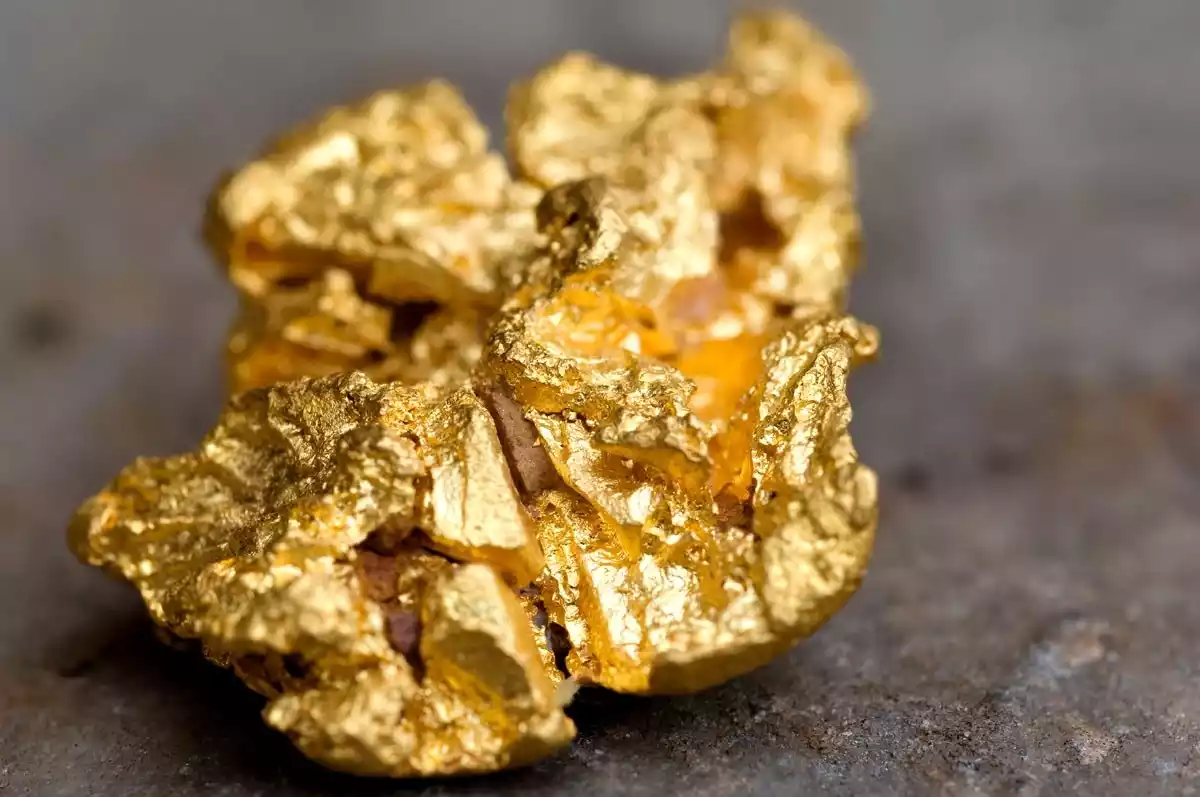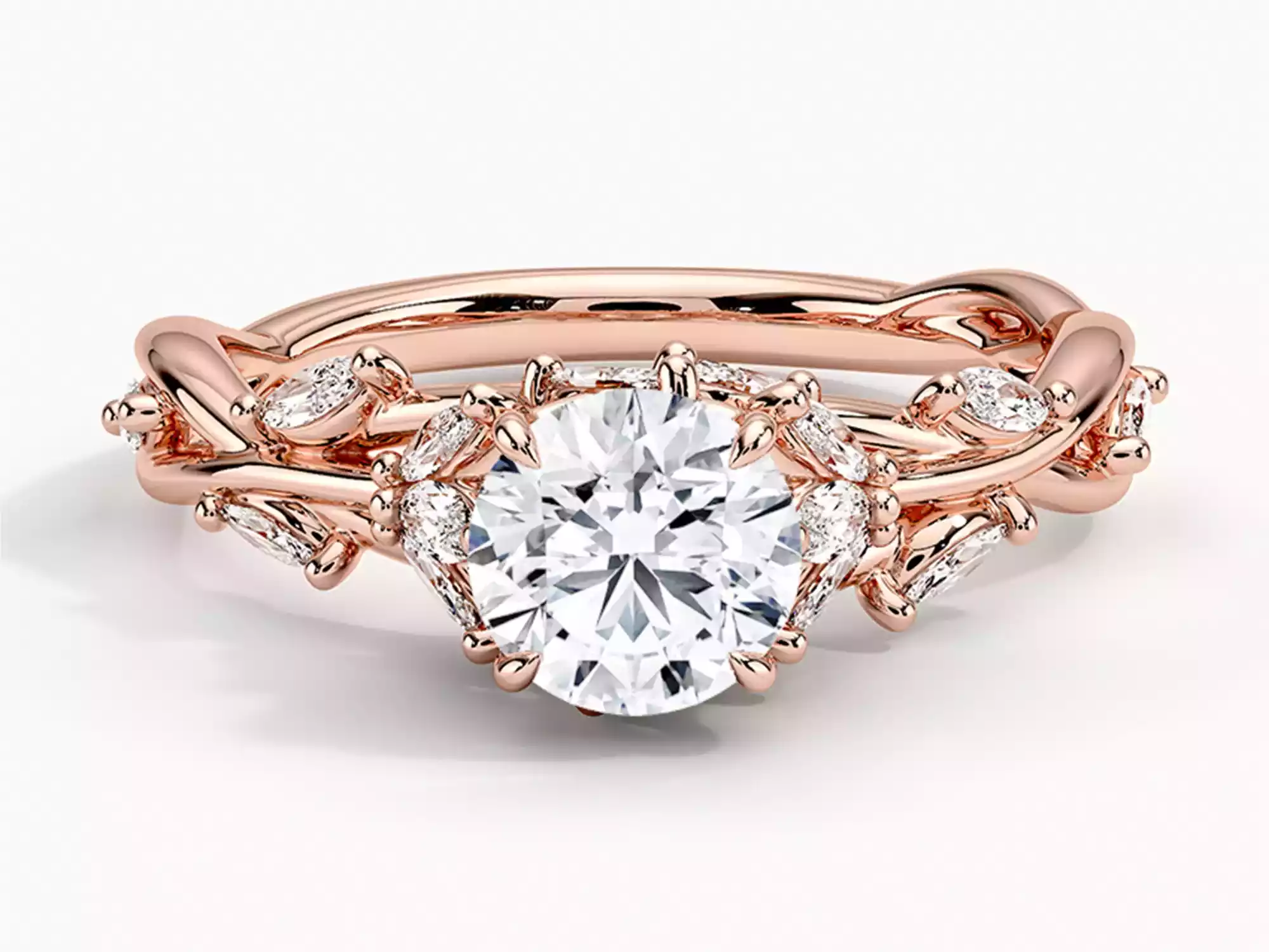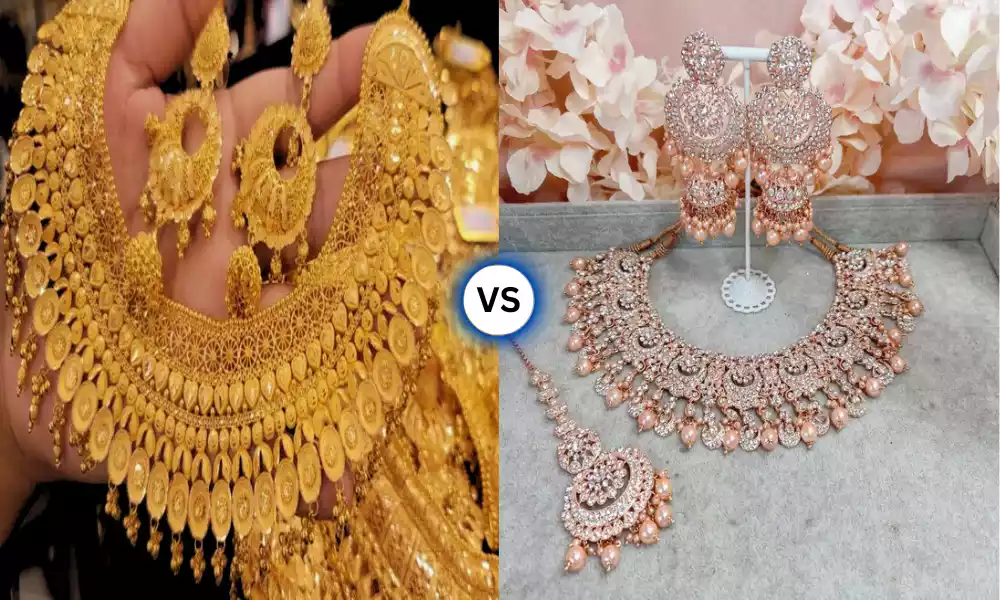Gold and Rose Gold are two alluring metals, that hold a timeless fascination for humanity. Gold, symbolized by its chemical notation Au, has transcended centuries as a symbol of wealth and prestige, captivating civilizations from antiquity to modern times. Rose gold, a warm and romantic alloy created by blending gold with copper, introduces a captivating rosy hue to the world of metals. In this exploration, we’ll delve into their compositions, unique characteristics, historical significance, contemporary applications, and the factors that make them cherished elements in jewelry, fashion, and beyond.
History and Cultural Significance
History and Cultural Significance of Gold:
-
- Ancient Civilizations: Gold has been treasured and used by humans for thousands of years. It was first discovered and utilized by ancient civilizations such as the Egyptians, Sumerians, and Indus Valley peoples. These cultures often associated gold with gods, pharaohs, and the afterlife.
- Currency and Trade: Gold’s rarity, divisibility, and resistance to corrosion made it an ideal medium of exchange. It served as currency in various forms, including gold coins, facilitating trade between distant regions.
- Art and Ornamentation: Gold has been employed for artistic and ornamental purposes throughout history. It adorned temples, palaces, and tombs with intricate jewelry, statues, and decorative items. The use of gold leaf in religious art and architecture was particularly prominent.
- Empires and Wealth: Many great empires, such as the Roman Empire, used gold extensively for their currency and as a symbol of their wealth and power. Gold became a measure of a nation’s economic strength and prestige.
- Symbolism: Gold often symbolizes purity, wealth, and immortality across cultures. In religious contexts, it is associated with the divine, enlightenment, and spiritual awakening.
- Gold Rushes: Historical events like the California Gold Rush in the mid-19th century led to significant migrations and economic changes. Gold discoveries in places like California, Australia, and South Africa sparked rushes of prospectors seeking their fortunes.
- Modern Investment: In the 20th and 21st centuries, gold has remained a store of value and a hedge against economic instability. It is a common investment asset, with prices influenced by global economic conditions.
History and Cultural Significance of Rose Gold:
-
- Early Appearances: Rose gold, as an alloy, has been around for centuries, but it gained prominence during the 19th century in Russia. It was initially known as “Russian gold” due to its use in Fabergé jewelry.
- Romanticism in Jewelry: The warm and romantic hue of rose gold made it a symbol of love and affection. It became a popular choice for engagement and wedding rings, embodying sentiments of love and commitment.
- Art Deco Era: Rose gold enjoyed another surge in popularity during the Art Deco era of the 1920s and 1930s. Its warm tones complemented the geometric and intricate designs of this period.
- Pop Culture and Fashion: In recent decades, rose gold has experienced a resurgence in popularity, driven in part by its use in fashion and accessories. Celebrities and designers have embraced it, making it a trendy choice for jewelry and fashion enthusiasts.
- Contemporary Symbolism: Today, rose gold is often associated with modernity, individuality, and a departure from traditional gold. It signifies a blend of the classic with a touch of romance and femininity.
- Bridal Jewelry: Rose gold has become a preferred choice for engagement and wedding rings, symbolizing love and commitment in a unique and stylish manner.
Gold has a rich and enduring history that spans various civilizations and periods, while rose gold’s cultural significance is more recent, marked by its associations with romance, fashion, and modernity. Both metals continue to hold a special place in the realms of art, culture, and personal expression.
What is Gold?
Gold is a chemical element with the symbol “Au,” which is derived from the Latin word for gold, “aurum.” It is a precious metal that is highly valued for its rarity, beauty, and various practical and symbolic qualities.

Here are some key characteristics and aspects of gold:
- Chemical Element: Gold is one of the 118 known elements on the periodic table, and it has the atomic number 79. It is categorized as a transition metal.
- Color: Gold is most well-known for its distinctive yellow color. It is often described as a bright, yellowish metallic hue.
- Purity Levels: Gold is rarely found in its pure form in nature. Instead, it is typically found in ores and is often mixed with other elements or minerals. Gold’s purity is measured in Karats (K), with 24K being considered the purest form. Common purity levels for jewelry include 18K (75% gold), 14K (58.3% gold), and 10K (41.7% gold).
- Malleability and Ductility: Gold is highly malleable and ductile, meaning it can be easily shaped, hammered into thin sheets (gold leaf), and drawn into wires. These properties make it ideal for jewelry and artistic applications.
- Corrosion Resistance: Gold is highly resistant to tarnish, rust, and corrosion, making it incredibly durable and long-lasting.
- Historical Significance: Throughout history, gold has been a symbol of wealth, prestige, and power. It has been used in currency (gold coins), as a store of value, and in various forms of adornment and decoration.
- Modern Uses: Besides its continued use in jewelry and decorative arts, gold has industrial applications in electronics (due to its excellent conductivity), dentistry (for dental work), and in aerospace technology.
- Investment: Gold is often used as a hedge against economic instability and is considered a safe-haven asset. Investors buy gold in various forms, including bullion, coins, and exchange-traded funds (ETFs).
- Symbolism: Gold is associated with qualities such as purity, beauty, and rarity. It is often used symbolically in cultural and religious contexts.
Gold’s enduring appeal, both as a practical material and as a symbol of luxury and value, has made it a coveted and cherished metal for thousands of years.
What is Rose Gold?
Rose gold, sometimes referred to as pink gold or red gold, is a popular alloy of gold that exhibits a distinct warm, pinkish to reddish coloration. This unique and elegant metal is created by blending pure gold with copper, although sometimes small amounts of silver or other metals can be added to achieve specific hues and properties.

Here are some key characteristics and aspects of rose gold:
- Composition: Rose gold is not a pure elemental metal like gold but rather an alloy. The exact composition can vary, but the most common mixture is typically 75% gold (18 karats) and 25% copper, though other ratios can be used to achieve different shades of rose or pink.
- Color: The defining feature of rose gold is its warm, pinkish hue. The specific shade can vary depending on the copper content and alloy proportions, ranging from a subtle blush to a more pronounced reddish-pink.
- Durability: The addition of copper to gold in rose gold alloys makes it somewhat stronger and more durable than pure gold. However, it is still softer and more malleable than many other metals, making it well-suited for jewelry but requiring care to avoid damage.
- Jewelry and Fashion: Rose gold has gained immense popularity in the world of jewelry and fashion due to its romantic and feminine appearance. It is often used in engagement rings, bracelets, necklaces, and other accessories, offering a contemporary twist on traditional gold.
- Versatility: Rose gold complements a wide range of gemstones and other metals, making it a versatile choice for designers and jewelry makers. It can be paired with white gold, yellow gold, or even platinum for striking visual contrasts.
- Trend and Popularity: Rose gold has experienced a resurgence in popularity in recent years, becoming a trendy choice in both fine jewelry and fashion accessories. Its ability to blend tradition with a modern, romantic feel has contributed to its widespread appeal.
- Care and Maintenance: Like all jewelry, rose gold requires care to maintain its appearance. While it is more durable than pure gold, it can still scratch and show signs of wear over time. Maintenance and cleanliness are keys to keeping its beauty.
Rose gold is a beautiful and fashionable alloy of gold, created by mixing pure gold with copper to achieve its distinctive pinkish to reddish color. Its versatility, romantic appeal, and compatibility with various gemstones have made it a sought-after choice for jewelry and fashion enthusiasts.
Comparison Table of Gold and Rose Gold
Here’s a comparison table outlining the key differences between gold and rose gold:
| Characteristic | Gold | Rose Gold |
|---|---|---|
| Chemical Symbol | Au (from “aurum”) | Au-Cu alloy |
| Color | Yellow | Pinkish to reddish |
| Composition | Pure elemental gold | Gold alloyed with copper |
| Purity Levels | Varies (e.g., 24K, 18K) | Varies (e.g., 18K, 14K) |
| Luster | Bright and shiny | Warm and slightly rosy |
| Strength and Durability | Soft and malleable | Harder due to copper alloy |
| Historical Significance | Symbol of wealth and value | Blends tradition with flair |
| Cultural Associations | Prestige, wealth, and power | Romantic and feminine |
| Modern Popularity | Widely used in jewelry | Increasingly trendy |
| Applications | Jewelry, coins, electronics | Jewelry, fashion, watches |
| Care and Maintenance | Relatively low maintenance | Similar to gold, requires care |
| Market Trends and Pricing | Subject to fluctuations | Demand-driven variations |
| Industrial and Technological Use | Electronics, dentistry | Limited due to color |
| Investment | Store of value, hedging | Gaining investment appeal |
This table provides a concise overview of the primary differences between gold and rose gold, considering their composition, appearance, historical significance, modern popularity, and various applications. Keep in mind that the specific characteristics of each metal can vary depending on factors like alloy composition and care.
The significance of gold and rose gold in jewelry and design
The Significance of Gold in Jewelry and Design:
-
- Timeless Elegance: Gold has a long history of being used in jewelry and design due to its timeless elegance. Its bright and lustrous appearance adds a touch of luxury and sophistication to any piece.
- Symbol of Wealth: Throughout history, gold has been associated with wealth and prosperity. Wearing gold jewelry can signify affluence and success.
- Cultural and Religious Significance: Gold holds great cultural and religious significance in many societies. It is often used in religious artifacts and ceremonies, symbolizing purity and divinity.
- Versatility: Gold is a versatile metal that can be molded into intricate designs, making it a favorite among jewelry designers. It complements a wide range of gemstones and can be fashioned into various styles, from classic to contemporary.
- Sentimental Value: Gold jewelry is often given as gifts to mark special occasions such as weddings, anniversaries, and birthdays. These pieces hold sentimental value and are passed down through generations.
- Store of Value: Gold’s intrinsic value and long-term stability make it a popular choice for investment. Many people purchase gold jewelry as a store of value, knowing that it will retain its worth over time.
The Significance of Rose Gold in Jewelry and Design:
-
- Romantic Appeal: Rose gold’s warm, pinkish hue is often associated with romance and love. It is a popular choice for engagement and wedding rings, symbolizing affection and commitment.
- Modern Elegance: Rose gold offers a contemporary and stylish alternative to traditional yellow gold. Its unique color adds a modern twist to classic designs, making it a favorite among fashion-forward individuals.
- Versatility in Design: Rose gold’s soft and feminine appearance complements various gemstones, making it a versatile choice for jewelry designers. It pairs well with white gold, yellow gold, and platinum, allowing for creative combinations.
- Individuality: Rose gold allows wearers to express their individuality and personal style. Its distinctive color sets it apart from more common metals, making it a statement piece.
- Trendy and Fashionable: Rose gold has experienced a resurgence in popularity, particularly in the fashion world. Celebrities and designers have embraced it, leading to increased demand for rose gold jewelry and accessories.
- Customization: Many jewelers offer customization options for rose gold jewelry, allowing customers to create unique and personalized pieces that reflect their tastes and preferences.
- Blending Tradition and Modernity: Rose gold embodies a blend of traditional values and modern aesthetics. It appeals to those who appreciate the classic beauty of gold but seek a contemporary touch.
Both gold and rose gold hold significant roles in jewelry and design. Gold represents timeless elegance, cultural symbolism, and a store of value, while rose gold adds a touch of romance, modernity, and individuality to the world of jewelry, making it a meaningful and fashionable choice for many.
Durability and Strength
Durability and Strength of Gold:
- Softness: Pure gold is a relatively soft metal. Its malleability and ductility make it easy to work with, allowing it to be shaped into intricate designs. However, this softness also means it can scratch and deform more easily than harder metals.
- Prone to Wear: Gold jewelry, especially items worn daily like rings and bracelets, can develop scratches and dents over time due to its softness. The extent of wear depends on the purity of the gold and the wearer’s activities.
- Alloying for Strength: To improve durability, gold is often alloyed with other metals. Common alloying metals include copper and silver. The resulting alloys are harder and more resistant to wear. For example, 18K gold is 75% gold and 25% alloying metal, making it more durable than 24K pure gold.
- Tarnish Resistance: One of gold’s strengths is its resistance to tarnish and corrosion. It does not react with moisture or oxygen, maintaining its luster over time.
- Longevity: Gold jewelry can last for generations when cared for properly. With regular cleaning and maintenance, it can retain its beauty and value.
Durability and Strength of Rose Gold:
- Enhanced Strength: Rose gold is generally more durable and harder than pure gold due to the inclusion of copper in its alloy. Copper adds strength and resilience to the metal, reducing its susceptibility to scratches and dents.
- Tarnish Resistance: Like pure gold, rose gold is highly resistant to tarnish and corrosion, ensuring that it maintains its rosy hue and luster over time.
- Wear Resistance: Rose gold’s added strength makes it suitable for everyday wear, and it is often used in engagement rings and wedding bands, which endure constant use.
- Alloy Variations: The exact composition of rose gold can vary, affecting its durability. The ratio of gold to copper or other alloying metals influences its hardness and color.
- Care and Maintenance: While more durable than pure gold, rose gold jewelry still requires care to avoid damage. Regular cleaning and maintenance, such as polishing and prong inspection, are essential to ensure its longevity.
Gold is a relatively soft metal, which can lead to wear and scratches in jewelry. To enhance its durability, it is often alloyed with other metals. Rose gold, being an alloy of gold and copper, is generally more durable than pure gold and is well-suited for everyday wear. Both gold and rose gold are resistant to tarnish and corrosion, contributing to their long-lasting appeal. Proper care and maintenance are key to preserving the beauty and strength of these metals.
Care and Maintenance
Care and Maintenance of Gold and Rose Gold Jewelry:
- Regular Cleaning: To keep your gold and rose gold jewelry looking its best, clean it regularly. Soak the jewelry in a mild soapy water solution and gently scrub with a soft brush or toothbrush to remove dirt and oils. Rinse well with water, then pat the area dry using a lint-free, soft cloth.
- Avoid Harsh Chemicals: Take care to avoid exposing your jewelry to harsh chemicals, including household cleaners, chlorine, and bleach, which can damage both gold and rose gold. Remove your jewelry before swimming in chlorinated pools or using cleaning agents.
- Storage: Store your jewelry in a cool, dry place, away from direct sunlight and humidity. Use individual jewelry pouches or compartments to prevent pieces from scratching or tangling with one another.
- Polishing: Periodically polish your gold and rose gold jewelry using a jewelry polishing cloth. This will help maintain their shine and luster.
- Inspect Prongs: For pieces with gemstones, regularly inspect the prongs or settings to ensure stones are secure. Loose stones should be addressed promptly by a professional jeweler to avoid loss.
- Avoid Rough Activities: Remove your jewelry before engaging in activities that could subject it to unnecessary wear and tear, such as heavy lifting or sports.
- Limit Contact with Lotions and Perfumes: Apply lotions, perfumes, and hairsprays before putting on your jewelry to prevent buildup that can dull their surfaces.
- Professional Maintenance: Periodically, have your jewelry professionally inspected and cleaned by a jeweler. They can check for any potential issues and perform necessary repairs or re-plating if needed.
- Avoid Excessive Tarnish: While gold is highly tarnish-resistant, rose gold, which contains copper, may develop a patina over time. Some people prefer this aged look, but if you want to maintain the original color, store your rose gold jewelry in an airtight container to limit exposure to air.
- Consult a Jeweler: If you notice any damage, discoloration, or issues with your jewelry, consult a professional jeweler for assessment and repair. Prompt attention can often prevent more extensive damage.
By following these care and maintenance tips, you can ensure that your gold and rose gold jewelry remain beautiful, lustrous, and cherished for years to come.
Pricing and Market Trends
Pricing and Market Trends of Gold:
- Global Demand: The price of gold is influenced by supply and demand dynamics on a global scale. Jewelry and investment demand, as well as central bank reserves, significantly impact its price.
- Economic Conditions: Gold often serves as a safe-haven asset during economic uncertainties and crises. Its price tends to rise when there is economic instability, currency devaluation, or inflation fears.
- Inflation: Gold is considered a hedge against inflation, as its value tends to increase when the purchasing power of fiat currencies declines due to rising prices.
- Interest Rates: The relationship between gold prices and interest rates can be complex. Higher interest rates can make alternative investments more attractive, potentially reducing gold demand and prices.
- Currency Movements: Gold is priced in U.S. dollars, so fluctuations in currency exchange rates can impact its price. An ever-weakening dollar typically leads to higher gold prices.
- Geopolitical Factors: Geopolitical tensions, conflicts, or events can create uncertainty in financial markets, driving investors to seek the safety of gold and pushing prices up.
- Jewelry Demand: The demand for gold in jewelry, particularly in countries like India and China, can influence prices. Cultural events and festivals often drive spikes in demand.
- Mining Production: Changes in gold mining production can affect supply and thus impact prices. Major discoveries or disruptions in mining operations can have substantial effects.
- Investor Sentiment: Speculative trading and investor sentiment can lead to short-term price fluctuations. Gold often experiences price spikes during periods of speculative buying.
- Regulation and Government Policies: Government policies related to gold imports, exports, taxes, and tariffs can have a significant impact on local and international gold markets.
Pricing and Market Trends of Rose Gold:
- Gold Price Influence: The price of rose gold is closely tied to the price of gold, as it is an alloy of gold and copper. Changes in the price of gold can affect the cost of rose gold jewelry.
- Consumer Trends: Consumer preferences for rose gold jewelry can influence its pricing and market trends. Shifts in fashion and design often impact demand.
- Designer Influence: Prominent designers and fashion brands can influence trends in rose gold jewelry. Their creations can lead to increased demand for specific styles.
- Occasions and Seasons: Rose gold jewelry, particularly engagement rings and wedding bands, often sees fluctuations in demand during wedding seasons and special occasions.
- Customization: Customized and personalized jewelry using rose gold has gained popularity. The uniqueness of customized pieces can drive demand and prices.
- Market Supply: The availability of rose gold and the cost of copper, a key component, can impact pricing. Fluctuations in copper prices can influence rose gold costs.
- Artisan and Handcrafted Jewelry: Handcrafted and artisanal rose gold jewelry often commands higher prices due to the craftsmanship and uniqueness of each piece.
- Retailer and Brand Pricing: Prices for rose gold jewelry can vary significantly depending on the retailer and brand. High-end brands may charge premium prices for their designs.
The pricing and market trends of gold are influenced by a wide range of global economic and geopolitical factors, while rose gold pricing and trends are more closely tied to consumer preferences, customization, and fashion influences. Both metals are subject to fluctuations based on supply and demand dynamics.
Conclusion
Gold and Rose Gold are two precious metals that hold distinctive places in the realms of jewelry, design, and culture. Gold, with its timeless elegance and cultural significance, has symbolized wealth, power, and purity throughout history. It remains a sought-after choice for both investment and adornment. On the other hand, rose gold, with its romantic allure and modern charm, has gained prominence in recent years, particularly in engagement rings and fashion accessories.
Its warm, pinkish hue adds a contemporary twist to classic designs, reflecting individuality and love. Whether as a symbol of tradition or a statement of modernity, both gold and rose gold continue to captivate and inspire through their enduring beauty and significance.



